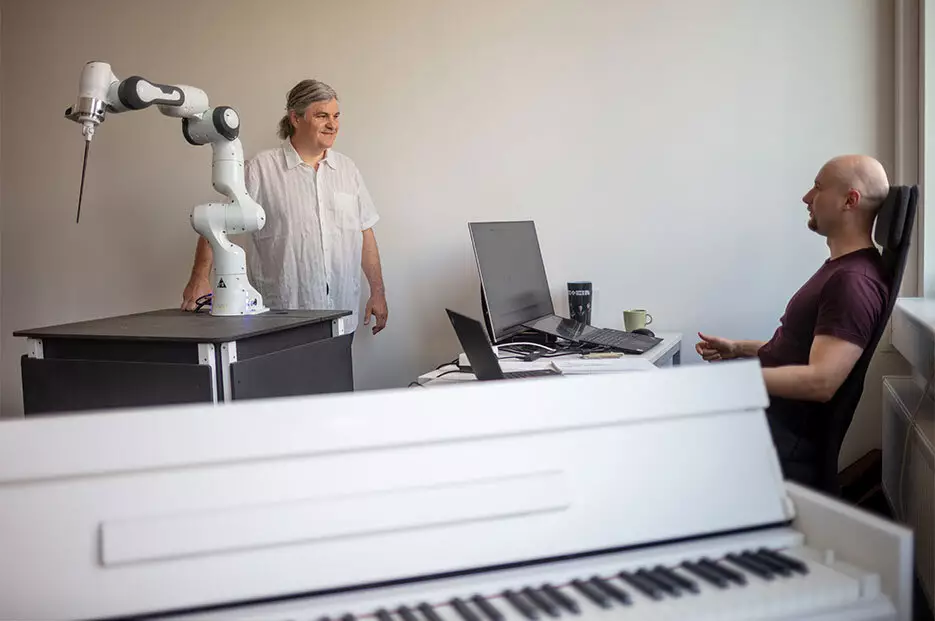In an exciting convergence of technology and artistry, a remarkable three-armed robot has taken its first steps onto the symphonic stage in Dresden, Germany, bringing with it a futuristic flair to orchestral performance. Designed to emulate the nuanced gestures of human conductors, this innovative robot has managed to capture the essence of musical direction while highlighting the synergy between man and machine. Its debut featured performances of original compositions specifically crafted to showcase the robot’s capabilities, ushering in a transformative chapter in the world of live music.
The robot, characterized by its sleek design and three independently moving arms, each wielding a baton reminiscent of sci-fi aesthetics, was not merely a novelty. During its inaugural performances with the esteemed Dresdner Sinfoniker, it showcased a unique ability to conduct different sections of the orchestra simultaneously. This multi-tasking capability, previously unattainable by a human conductor, opened new dimensions in orchestrating complex musical pieces, such as “Semiconductor’s Masterpiece,” composed by Andreas Gundlach.
The precision and independence of each arm enabled the robot to deftly manage the orchestration of three distinct musical lines. This innovative mode of conducting demanded attentiveness from the orchestra, which had to adapt to the rapid shifts and cues delivered by the mechanical maestro. The remote yet captivating presence of the robot prompted both musicians and audience members to reconsider the role of traditional conducting.
The genesis of the conducting robot highlights a collaborative approach between the arts and engineering, particularly stemming from research conducted at Dresden’s Technical University. Gundlach’s reflections on this process evoke an intriguing conversation regarding the boundaries between human creativity and technological advancement. He stated that training the robot to execute fluid, aesthetically pleasing movements profoundly deepened his appreciation for human artistry. Such insights foster a dialogue about the unique qualities of human conductors—empathy, emotional nuance, and creative spontaneity—qualities that a machine, regardless of its sophistication, may struggle to replicate.
Furthermore, this initiative reflects a growing trend in arts education where technology enriches the learning experience. As future musicians and conductors observe such innovations, they may find themselves inspired to explore new interpretations of music that harmonize the organic and the mechanical.
As the robot continues its journey in the world of orchestral music, it prompts a unique reflection on the future landscape of performance art. Artistic communities worldwide are sure to watch the evolution of this robotic conductor with keen interest. Questions arise: Will robots become regular fixtures in our concert halls? Can robots evoke the same emotional depth as their human counterparts?
The success of this robotics integration is not solely about replacing human effort; rather, it underscores the playful blending of roles within the artistic sphere. The future may well involve both humans and machines sharing the stage, collaborating to create innovative experiences. As we step further into this dynamic realm, the potential for collaboration, creativity, and fresh perspectives seems boundless.


Leave a Reply